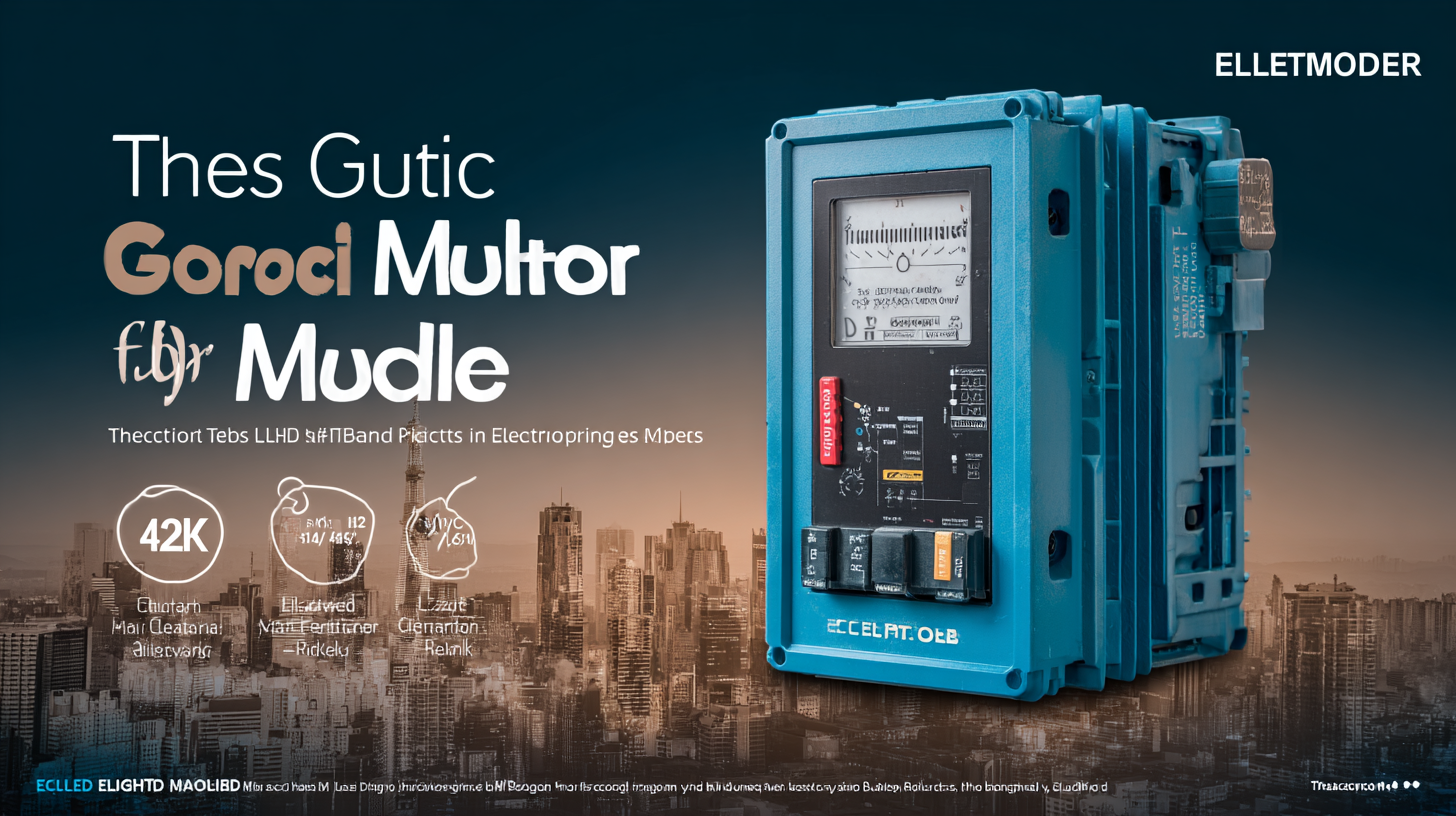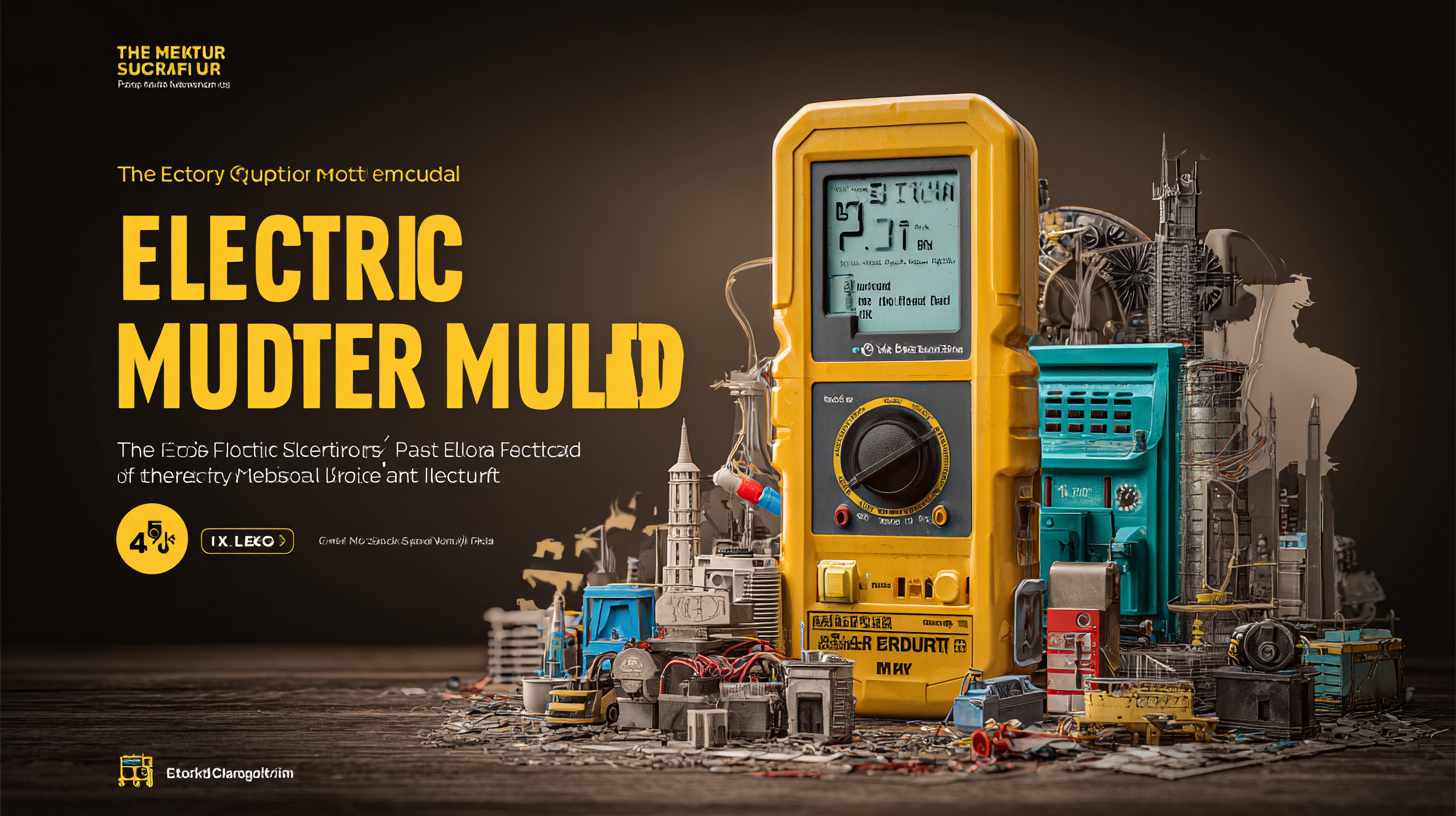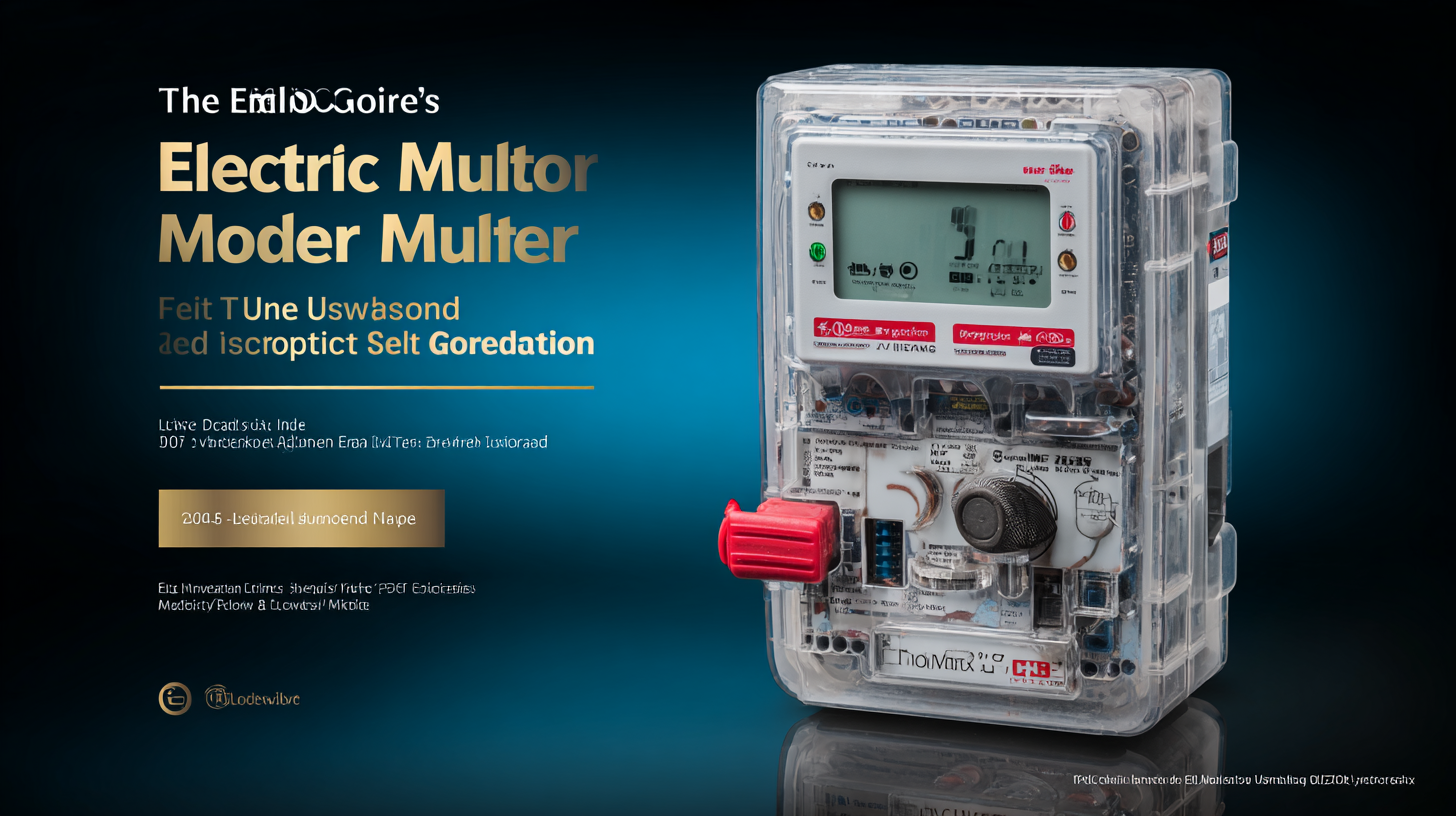In today's rapidly evolving energy market, the demand for high-quality Electric Meter Mold is surging, driven by advancements in smart grid technologies and the increasing need for efficient energy management solutions. According to a report by Allied Market Research, the global electric meter market is projected to reach $10.8 billion by 2026, growing at a CAGR of 7.4% from 2019 to 2026. This growth underscores the importance of sourcing reliable suppliers for electric meter components, particularly molds, which are critical for the production of accurate and durable meters. As businesses seek to enhance their supply chain efficiency and product quality, understanding the global landscape of Electric Meter Mold suppliers becomes essential. This guide aims to equip you with strategies and insights to identify and engage with top-tier suppliers, ensuring your production meets the highest standards of reliability and performance.

Electric meter molds come in various types, each designed to cater to specific needs within the metering industry. The most common types include single-phase and three-phase meter molds. Single-phase molds are typically used for residential applications, accommodating simpler wiring systems and less complex power requirements. They are crucial for measuring electricity consumption in homes, providing accurate data for billing and management. On the other hand, three-phase meter molds are geared towards commercial and industrial settings, where higher power demand necessitates more complex metering. These molds can handle larger loads and provide detailed insights into energy consumption across multiple phases.
In addition to these primary classifications, electric meter molds also vary based on features such as material composition, durability, and protection ratings. For instance, some molds are constructed from high-strength plastics or metals that resist environmental wear, ensuring longevity in various settings. Others are designed with advanced safety features, including moisture and dust resistance, making them suitable for outdoor installations. Understanding these differences is essential for selecting the right mold that meets specific operational requirements and enhances the reliability of electricity monitoring systems.
Electric meter molds play a crucial role in the electrical metering industry, providing the protective casing for measuring devices while ensuring precision and durability. Different types of electric meter molds are tailored for various applications, including residential, commercial, and industrial use. According to a recent industry report by ResearchAndMarkets, the global electric meter market is projected to reach $20 billion by 2025, fueling the demand for high-quality molds suitable for smart meters, which are increasingly adopted due to their advanced functionality.
The versatility of electric meter mold types not only caters to specific performance needs but also enhances the overall efficiency of energy management systems. For instance, using thermoplastic molds can significantly improve resistance to environmental factors, making them ideal for outdoor installations. Additionally, injection-molded parts can offer unmatched precision, vital for smart metering technologies that demand high accuracy in data collection.
**Tip:** When selecting an electric meter mold, consider materials based on your application's specific environmental conditions—such as UV resistance for outdoor meters or enhanced insulation properties for high-voltage applications. Always evaluate suppliers for their expertise in delivering molds that meet industry standards and innovative designs.
This chart illustrates the units sold of different electric meter mold types. Each type offers unique benefits suitable for different applications in the electric metering industry.
When searching for quality suppliers for electric meter molds in the global market, assessing supplier quality is critical to ensuring the longevity and reliability of your products. Begin by evaluating their manufacturing capabilities and technology. Suppliers who utilize advanced machinery and adopt best practices in production are more likely to produce high-quality molds that meet international standards. Additionally, consider their certifications and compliance with industry regulations to ensure safety and efficiency in their manufacturing processes.

Another important factor in assessing supplier quality is their track record and customer feedback. Engaging with current and past clients can provide insights into the supplier’s reliability, response times, and overall satisfaction. Look for case studies or testimonials that showcase the supplier’s ability to meet specific needs and adapt to challenges. Conducting site visits can also reveal a lot about their operational standards and commitment to quality. By thoroughly evaluating these aspects, you can make informed decisions and forge successful partnerships in the competitive electric meter mold market.
When selecting electric meter mold suppliers worldwide, it is crucial to consider several key factors to ensure you partner with the best in the business. First and foremost, assess the supplier's experience and expertise in the industry. A supplier with a proven track record in manufacturing high-quality electric meter molds will have the knowledge necessary to address specific project needs and challenges.
Another important consideration is the supplier's compliance with global regulations and standards. With recent changes in regulations regarding Global Warming Potential (GWP), it is essential that your supplier adheres to environmentally friendly practices. This includes not only the manufacturing processes but also the materials used in the production of electric meter molds.

Tips for choosing the right supplier include requesting samples to evaluate their product quality and performance. Additionally, consider their customer service and support offerings, as strong communication and responsiveness can significantly impact your project's success. Lastly, reviewing customer testimonials and case studies can provide valuable insights into the supplier's reliability and capability, helping you make a more informed decision.
When it comes to manufacturing electric meter molds, the choice of materials plays a crucial role in determining both performance and durability. Different materials offer varying degrees of strength, thermal resistance, and electrical insulation, which directly affect the efficiency of the electric meters produced. For instance, high-grade polymers can provide exceptional resistance to environmental factors, ensuring longevity in extreme conditions. On the other hand, metal molds might be preferred for their superior dimensional stability and heat conductivity, which are essential for precision engineering and reliability.
Moreover, the selected material influences not just the mold’s performance during the production phase, but also the overall lifecycle of the electric meters. Molds made from materials that resist wear and tear will reduce maintenance costs and improve production times, thereby enhancing profitability. Additionally, an understanding of material properties allows manufacturers to design molds that minimize defects, ensuring consistent output quality. Therefore, careful consideration of material selection is imperative for companies looking to optimize their electric meter mold production, ultimately leading to better market competitiveness.
